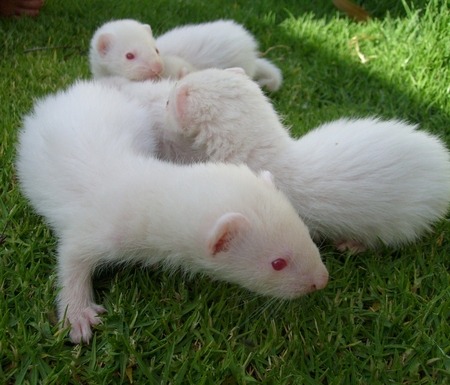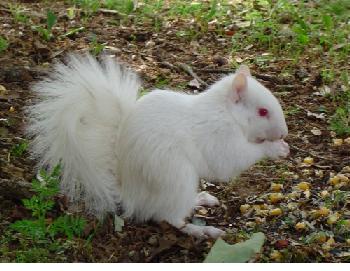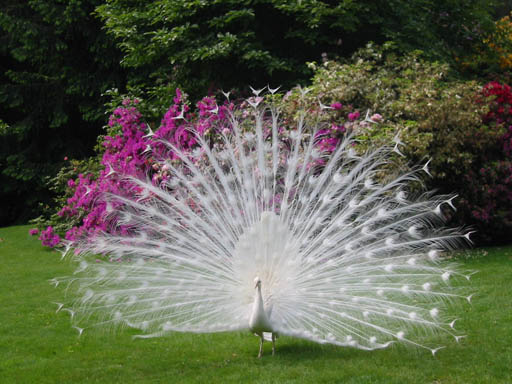|
|
|---|
Friday, September 10, 2010
Do you remember when I told you about that fluffy little white dog named Sprite who is at the Humane Society shelter? She is one of the dogs I said you should adopt. Anyway, she had cherry eye in both eyes, and she got her eyes fixed by Dr. Michelle, who is one of the vets at the shelter. But now the cherry eye came back in one of Sprite's eyes, so it will have to be fixed again.
First of all, you need to know about the nictitating membrane, which is also called the "third eyelid." A lot of reptiles and birds have this third eyelid, but most mammals just have a little bit of one that doesn't really do much. Except for a few mammals, like camels, for example, who use this membrane to cover their eyes and protect them from sand. And polar bears have it, too, which keeps them from getting snow blindness. One interesting thing about the nictitating membrane is that it goes across the eye from side to side, instead of up and down like regular eyelids. And another interesting thing is that "nictitating" is a hard word to spell and to pronounce!
Dogs and cats have a third eyelid, but most of the time you can't see it because they don't use it like camels and polar bears do. If you do see it a whole bunch, though, it probably means that dog or cat is sick. Anyway, there is this gland thing in the third eyelid, and it makes tears to help keep the eye from getting all dry and scratchy. But sometimes the gland prolapses, which means it gets out of place. So then it sticks up and covers part of the eye. And if it's not fixed, it can get all infected and yucky and maybe even damage a dog's eye.
Nobody knows exactly why the gland gets out of place, but it might be because the tissue that's supposed to hold it where it belongs is weak. And the reason the tissue is weak might be because a dog inherited this problem from a sire or dam. Which is kind of shown by the fact that certain breeds of dogs get cherry eyes more often than other breeds. And the breeds that get it the most are basset hounds, beagles, bloodhounds, Boston terriers, boxers, bulldogs, bull terriers, cocker spaniels, Lhasa apsos, mastiffs, Saint Bernards, and sharpeis. Of course, any kind of dog can get it, even basenjis. And cats can get it, too.
It used to be that people thought the best way to fix cherry eye was to take the gland out, but after they did this, dogs often had dry eyes and needed drops the rest of their lives. So now people think the best way to fix cherry eye is to push the gland back into place and tack it to a part of the eye socket that is deeper down. But don't try this at home! It's the kind of thing that you need have your vet do.
Okay, well, that's mostly all I learned about cherry eye. There are a lot of really gross photos of cherry eyes on the internet, but I tried to find some that weren't too incredibly yucky. The main thing to remember is that if this condition shows up in your dog or cat, you should have it fixed right away before that gland gets all swollen and infected.
And now I'm just going to go close my eyes and take a little nap!
0 Comments:
Subscribe to:
Post Comments (Atom)












.jpg)





